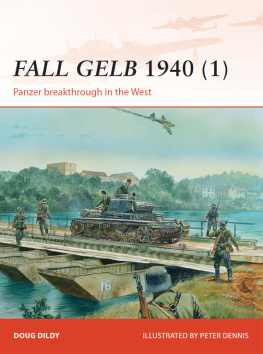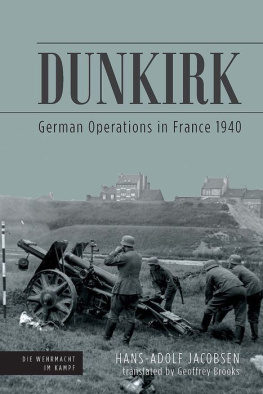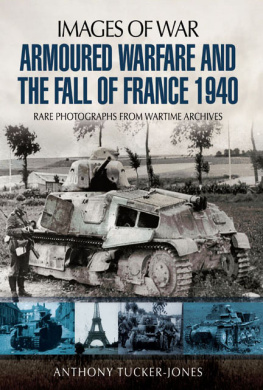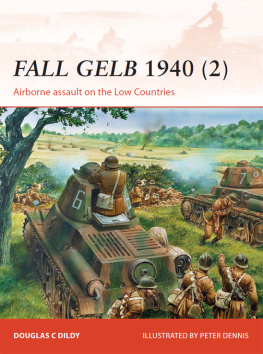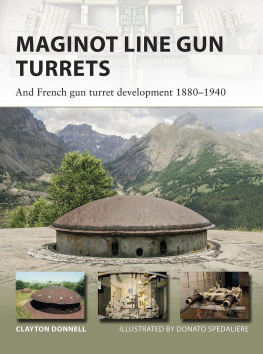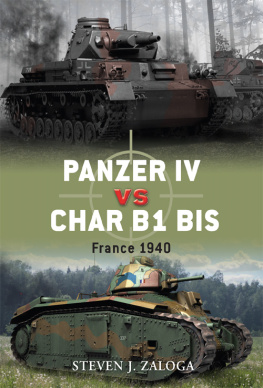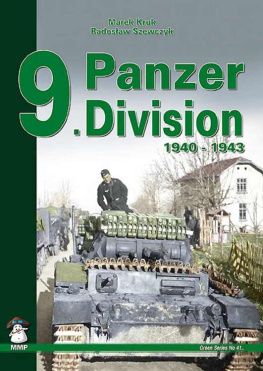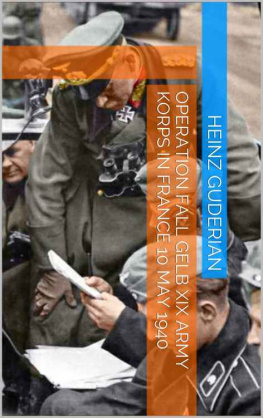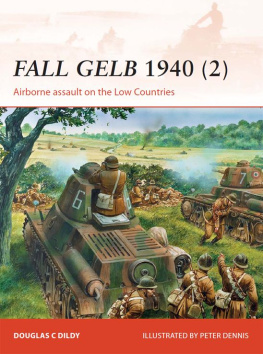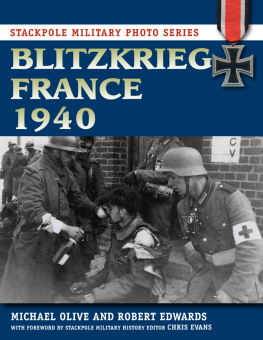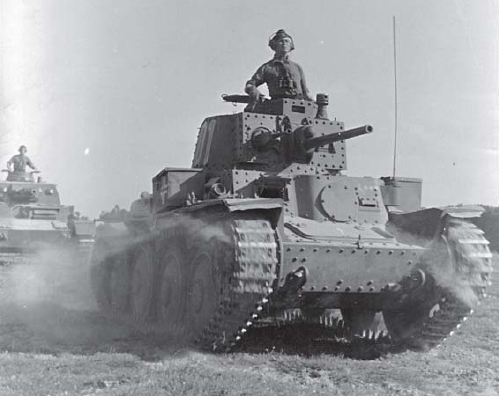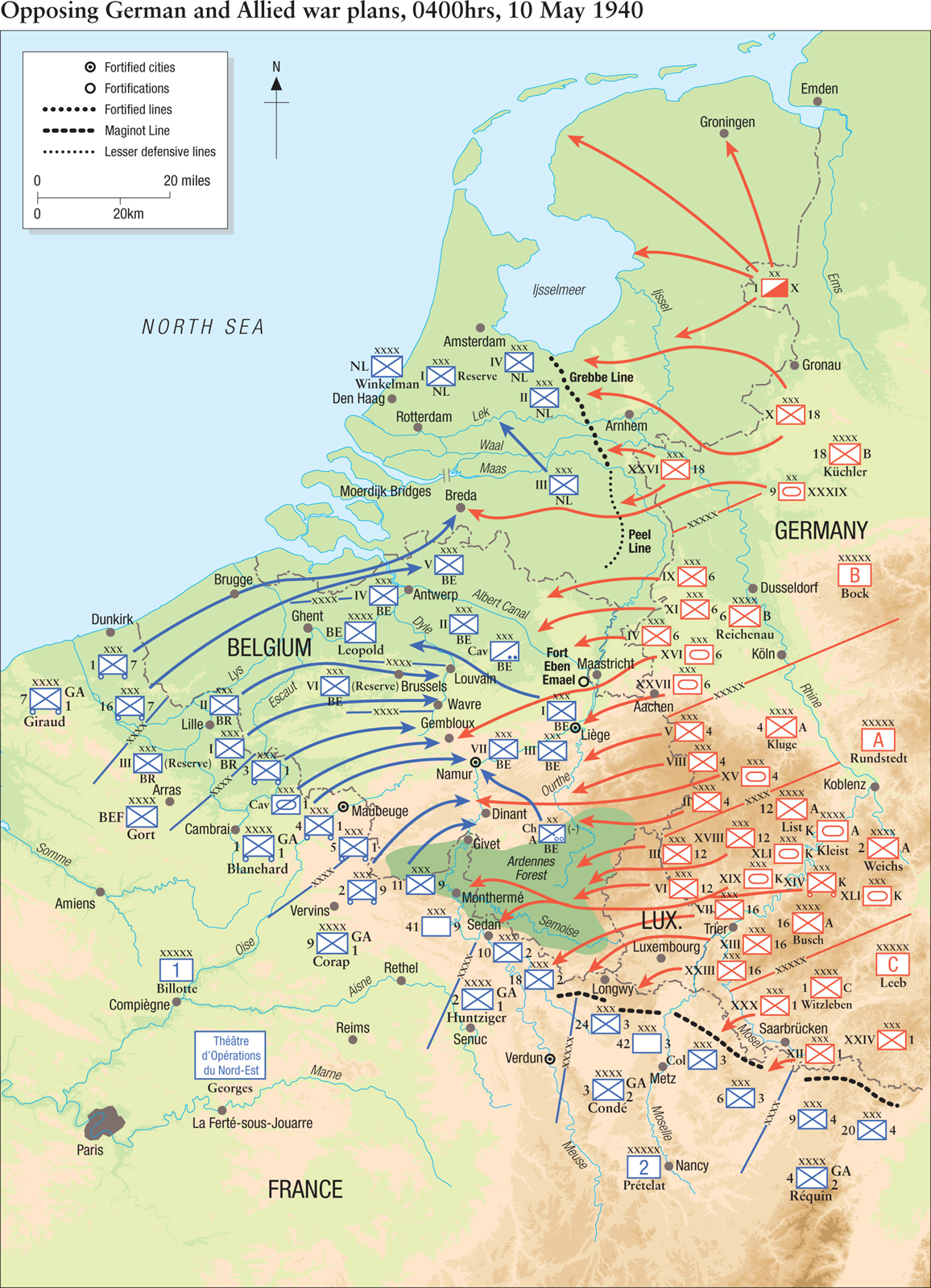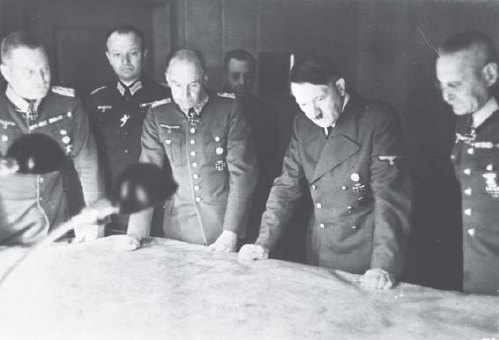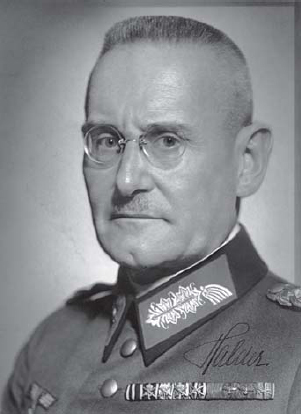CAMPAIGN 264
FALL GELB1940 (1)
Panzer breakthrough in the West
| DOUGLAS C DILDY | ILLUSTRATED BY PETER DENNIS |
| Series editor Marcus Cowper |
CONTENTS
ORIGINS OF THE CAMPAIGN
How the situation would turn out if France and England march into Belgium and Holland is constantly the concern of the Fhrer
Oberkommando der Wehrmacht War Diary, 6 October 1939
Fresh from their speedy and victorious offensive through southern Poland, on 24 October 1939 Generaloberst Gerd von Rundstedt and his Heeresgruppe Sd (Army Group South) staff travelled by train across the breadth of Germany to establish their new headquarters at Koblenz, thus becoming Heeresgruppe A. Before they arrived Adolf Hitler was already hectoring his OKW (Oberkommando der Wehrmacht, Hitlers personal joint military staff) to organize a blow against the Western democracies he was anxious to quickly and decisively end the war that had already expanded beyond his initial designs.
In a final, futile political act attempting to reverse the disastrous course of events in Europe, on 1 September 1939 France and Great Britain issued an ultimatum to Hitler to cease his invasion of Poland and withdraw his military forces. However, the Wehrmacht was already driving deep into the Polish Armys rear areas and there was no thought of turning back. Unfortunately committed and woefully unprepared the allied French and British had no recourse but to fulfil their promise to the Poles and their threat to the Nazis, and they declared war on the Third Reich two days later.
Hitler and OKH staff members at the planning map table. (Bundesarchiv Bild 146-1971-070-61)
The French Armys half-hearted offensive into the Saar region (712 September) a vain attempt to distract the Germans from completing their crushing campaign in Poland only antagonized the Fhrer. Consequently, Hitler desperately wanted to defeat the impertinent western Allies before they had opportunity to recover from their ill-considered unpreparedness, enlist the support of neutral Belgium and Holland, and advance to Germanys western frontier, thus threatening the Ruhr industrial basin and presaging a destructive defensive conflict on German soil.
The enemy gains strength, Hitler said, and one winter night England and France will be on the Maas [the Meuse in French-speaking regions] without firing a shot and without our knowing about it. Consequently, on 9 October, he directed the three service chiefs to plan a pre-emptive offensive campaign on the northern flank of the Western front, through Luxembourg, Belgium and Holland. This offensive must be launched at the earliest moment and in the greatest possible strength.
Issued ten days later, and revised ten days after that, the armys plan (Aufmarschanweisung Fall Gelb or Deployment Directive, Case Yellow) was produced under the direction of the OKH (Oberkommando des Heeres, the army high command) chief of staff General der Artillerie Franz Halder. In order to meet Hitlers demand for an offensive before winter, he developed a hasty plan that called for a direct frontal attack by the German forces then stationed in the west. These consisted of 56 infantry divisions deployed defensively to protect the Reich from attack by the French and British armies advancing through Belgium and southern Holland, reinforced by nine newly arrived or recently formed Panzer divisions.
In the plans initial iterations the main thrust was to be through central Belgium with armoured, motorized troops on the northern wing, mountain troops advancing through the Ardennes on the southern flank, and airborne forces landing in the rear, near Ghent, to disrupt Allied mobile forces attempting to reinforce the Belgian front lines. On the north side, Generaloberst Fedor von Bocks Heeresgruppe B (43 divisions in four armies, plus two air-delivered divisions) was to cross the Maas/Meuse between Nijmegen and Namur and drive to the Channel coast. Dutch neutrality was to be respected, except for the necessity of transiting the Maastricht Appendix (a sliver of the Netherlands on the east bank of the Maas descending south between Belgium and Germany), which Generaloberst Walter von Reichenaus Armeeoberkommando (AOK) 6 had to cross in order to bypass the Lige fortresses to the north, while Generaloberst Gnther Hans von Kluges AOK 4 skirted Lige to the south. These two armies including nine Panzer and four motorized divisions would link up west of Lige and advance together through Brussels and Charleroi to Calais and Boulogne in France.
In the German centre, Rundstedts Heeresgruppe A (22 divisions in AOKs 12 and 16) was to protect Bocks left flank from French attacks from the south-west. In the south, facing the indomitable Maginot Line, the role of Generaloberst Wilhelm Ritter von Leebs Heeresgruppe C (19 divisions in AOKs 1 and 7) was purely defensive, holding the Rhine and preventing a more determined replay of the French offensive into the Saar. Air support for the offensive would be provided by General der Flieger Hellmuth Felmys Luftflotte 2 and General der Flieger Hugo Sperrles Luftflotte 3.
None of the participants the OKH, the Luftwaffe, the army group commanders, or even Hitler himself were pleased with the plan. Particularly dissatisfied was Generalleutnant Erich von Manstein, Rundstedts chief of staff. His assessment was that there was little to commend it: it required a frontal push against the bulk of Allied mobile forces in Belgium to gain territory rather than a manoeuvre designed to annihilate the Allied forces, securing the required territory as a natural consequence of victory. Additionally, it was vulnerable, even with Heeresgruppe As best efforts, to French counterattacks from Lorraine which could drive north-eastwards and trap German forces in Belgium.
Most critically, Manstein stated, The 1939 operation plan contained no clear-cut intention of fighting the campaign to a victorious conclusion. Its object was, quite clearly, partial [sic] victory (defeat of Allied forces in northern Belgium) and territorial gains [sic] (possession of the Channel coast as a basis for future operations). Rundstedt agreed and both began needling OKH for a major change, urging a shift of the Schwerpunkt (the main weight of the assault) to the southern wing of the offensive.
Meanwhile, in November Hitler too began to tinker with the plans fundamental concept. Presciently, he foresaw the offensives first phase now to be launched mid-winter stalling in central Belgium due to poor weather and ground conditions. For the second phase, he ordered a small mechanized (one Panzer and one motorized division) corps be added to Heeresgruppe A to make a penetration via Arlon, Belgium, cross the Meuse at Sedan, and attack towards Laon, in order to ease the task of Heeresgruppe B in [the advance] beyond Lige. Obediently, on 9 November, the OKH assigned General der Panzertruppen Heinz Guderians XIX Armeekorps (motorisiert) (AK (mot.)), then in OKH reserve near Berlin, to Heeresgruppe A. Guderians branch of the follow-up assault was added to the Fall Gelb orders as an amendment.

